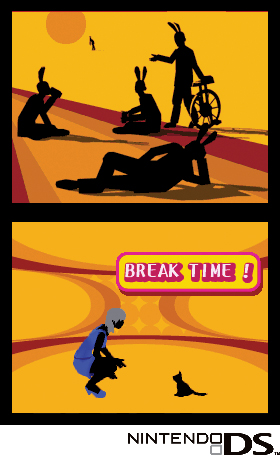Metroid Prime Hunters – Scope~Progression~Gameplay
May 6th, 2011
http://www.youtube.com/watch?v=z_GeoRC71BIDidn’t take long did it?
Back in January I finished playing Metroid Prime Hunters for the DS and had written up some notes on the game. I wanted to focus on the game’s structured exploration. Here is more or less what I wanted to say, minus substantial, validating examples.
The game is broken up into several planets that the player must go to twice each. Exploring certain planets will give the player the beams they need to open doors on other planets. The beams/doors are a lock and key approach which facilitate the player having to return to each planet a second time. Each “journey” to a planet contains 3 parts: obtaining the artefacts, a boss battle and an escape, with the former most being the largest portion of the three. Since there are 3 artefacts, this initial portion is then broken down into thirds. But it goes further still.
The DS isn’t a technical powerhouse, so to create the perception of a large scope while not running the hardware into the ground, each planet is only a handful of 4-8 large rooms connected by small passages. Considering how much processing is needed to render and store these large rooms, they’re mined for all they’re worth through this lock and key approach. Each room is locked several layers deep when the player first enters. The player then needs to do a variety of tasks, namely, clearing enemies and activating locks to peel back the layers and open the room completely.
As we can see, from the game as a whole to each individual room, Metroid Prime Hunters is broken into a series of micro-objectives that manage the gameplay. Whether it be go to a planet, get an artefact or beat this enemy to open this part of the room. What this highly-managed system does is create a contrived sense of progression. The player only ever needs to explore for themselves in small steps before another task opens up. So, in the end Hunters feels clinical and inorganic. Contrast this to the game’s console brother Metroid Prime where the player is given a whole area, several rooms or an entire sub-terrain to explore and find clues.
Break Time
May 4th, 2011
The last post on the Golden Passage concludes my level analysis posts. I still have much more to write about Wario Land 4 obviously and the stuff I’ve already posted needs major editing before it’s ready for publishing, however, I have met my “phase 1” goal.
My “phase 1” goal was to have written about the mechanics, core elements, levels and covered most of the design essays by May 15th and I’ve met this deadline with ten days still left on the clock. My estimates peg my output over the last 3 and a half months at roughly 180 pages. I’m pretty damned proud of that figure. The idea behind the deadline was to prove to myself that I could actually do this whole author thing for real. Already I am thinking ahead to the next part of this project and other projects too.
I have cleverly titled the second phase of the Wario Land 4 project “phase 2”. I’m hoping that phase 2 will last about 4 months and basically sees the project through from what it is now to book form. If it takes longer than 4 months then that’s really no big issue at all. So long as I get it out this year. I need to spend the next part of the project getting some distance and a fresh perspective. This means that I will probably go back to writing about other games like I did before, but still keeping up my input on the Wario project. There will be an extensive editing phase which won’t materialise on the blog too.
For now though, I need to chill out and switch my brain off Wario Land 4, so that I can come back all ready for the next part. I have no idea what I’ll be posting next, but I’m itching to write something. I’m thinking that I’ll start the other projects now and start fostering those ideas early. Who knows? I’ll get back seen.




 Game Design Companion: A Critical Analysis of Wario Land 4 - $7.99
Game Design Companion: A Critical Analysis of Wario Land 4 - $7.99 Level Design: Processes and Experiences
Level Design: Processes and Experiences Speed Boost: The Hidden Secrets Behind Arcade Racing Design - $5.99
Speed Boost: The Hidden Secrets Behind Arcade Racing Design - $5.99 Adventures in Games Analysis: Volume I - $5.99
Adventures in Games Analysis: Volume I - $5.99







